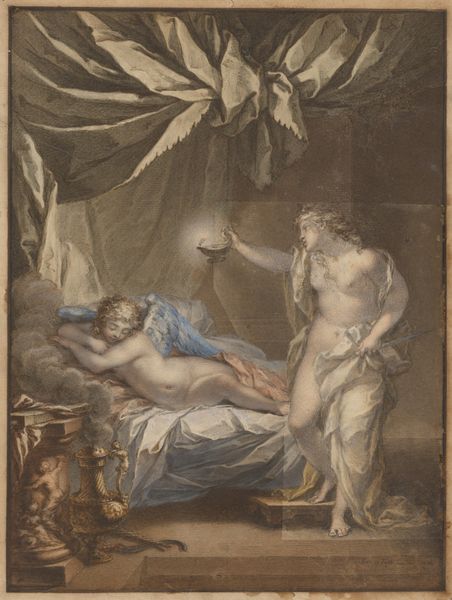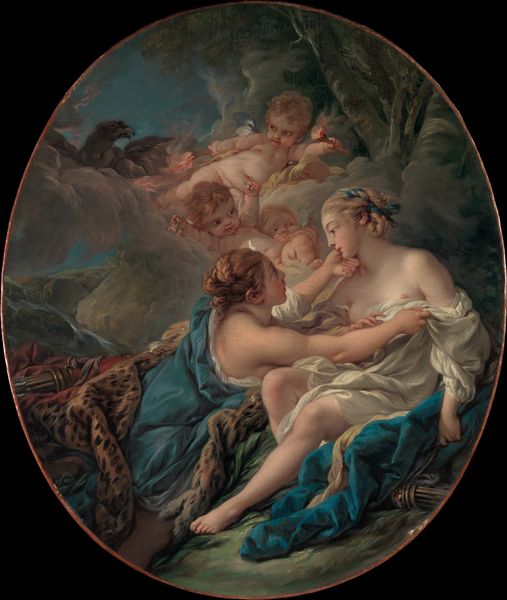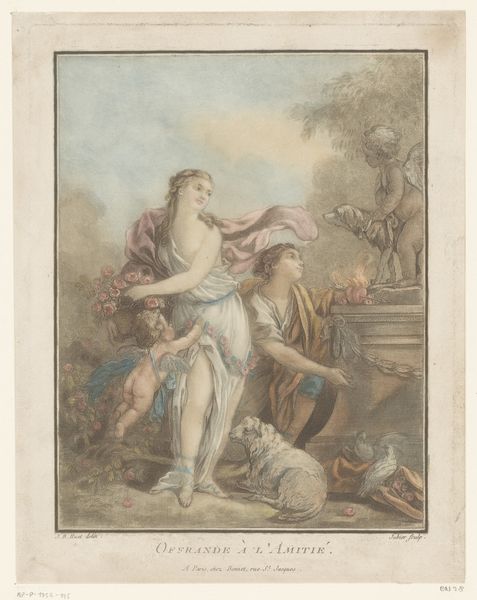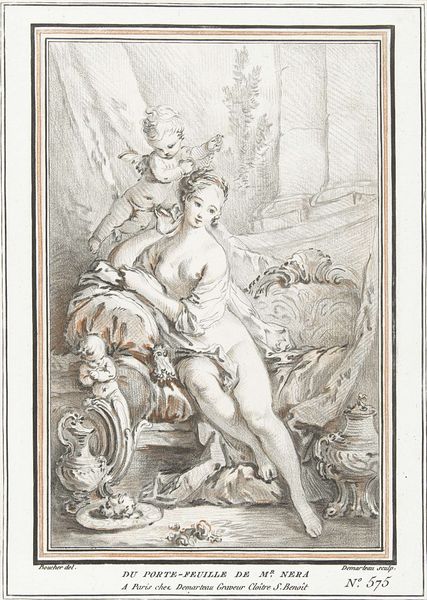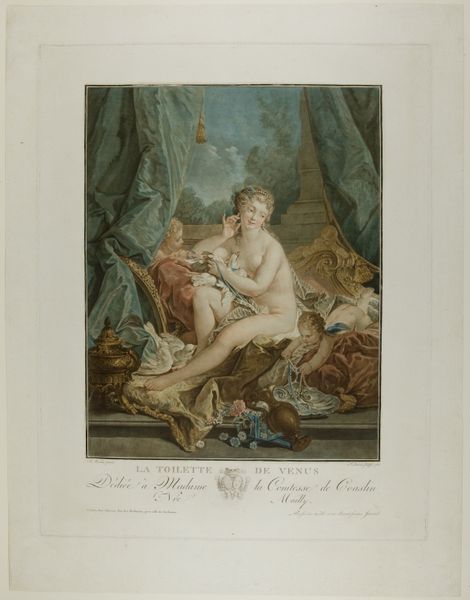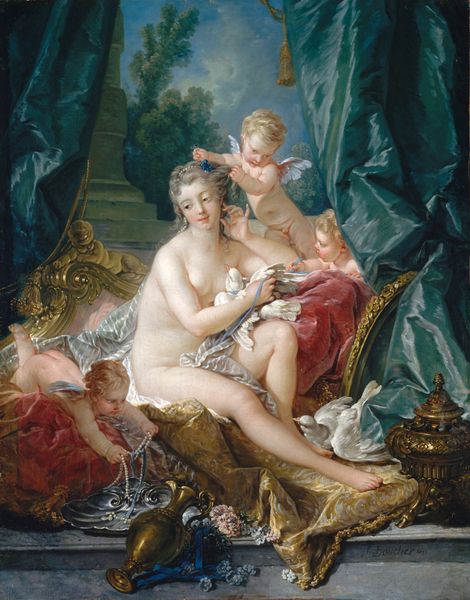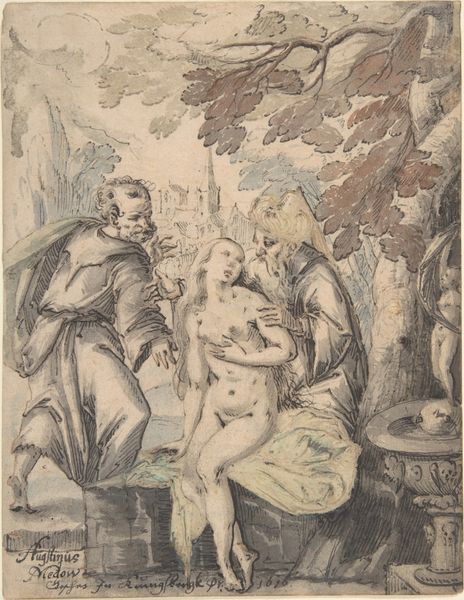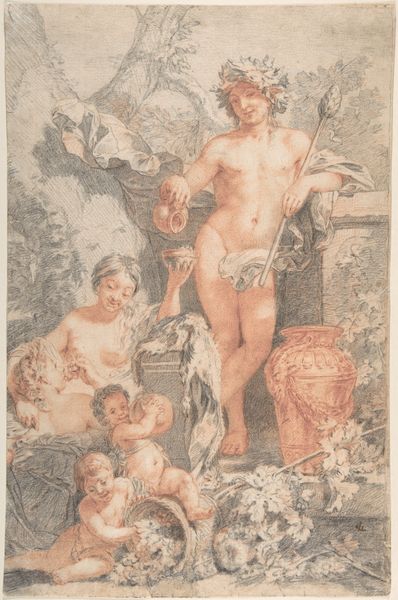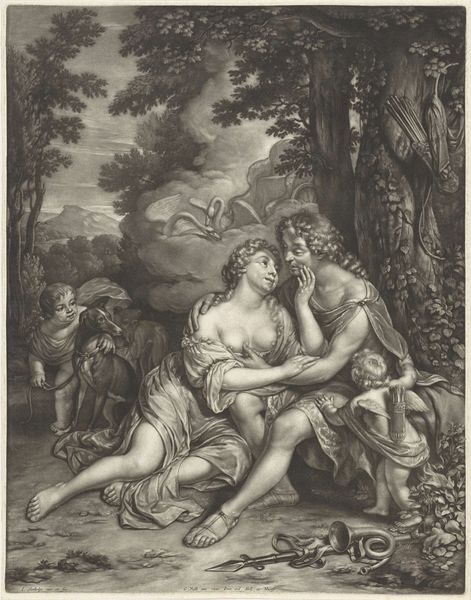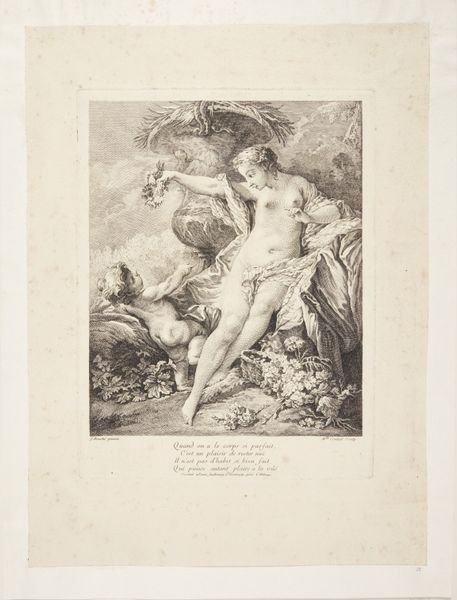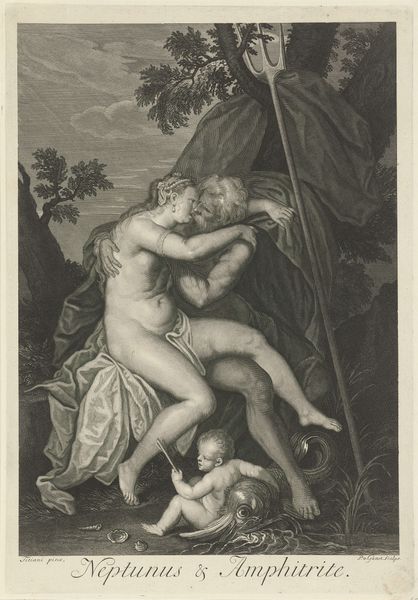
Dimensions: image: 14 3/4 x 11 1/2 in. (37.5 x 29.2 cm) sheet: 17 7/16 x 12 5/16 in. (44.3 x 31.3 cm) clipped
Copyright: Public Domain
Curator: What strikes me first is the almost dreamlike quality of the scene; it's so ethereal and delicate. Editor: Well, you’ve touched on the Rococo sensibility, certainly. We’re looking at "The Toilet of Venus," a print and watercolor piece executed in 1783 by Jean-François Janinet, now held at the Metropolitan Museum. Curator: Janinet really captures Venus's classical associations. It reminds us how the tradition of depicting Venus persisted in European art—here not as a goddess in the heavens, but in her toilette. The pigeons offer an especially complex, if sometimes overlooked, symbolism. They connect the intimate moment to broader themes of beauty, purity, and domesticity, almost softening Venus. Editor: I wonder, though, how Janinet's audiences received the classical nude in print form during the late 18th century? We should acknowledge that access to art, especially images like this, was tied to social class. What narratives did this image reinforce or challenge at the time? Curator: The placement of cupids feels crucial. Their interaction directs the gaze towards her gesture, highlighting that the moment is both observed and intentionally presented. And water colors really evoke softness, which, coupled with that historical fashion and hair-do creates a feeling of being very "on trend". This aligns the classical reference with the aesthetic concerns of the era. It's not simply historical; it's engaged with contemporary cultural symbols. Editor: Yes, the details in historical fashion are quite telling. They offer clues about the artwork’s market – likely wealthier patrons interested in neoclassical interpretations tailored to their status. I also think it’s key to remember that allegories offered commentary, even veiled criticism. What social attitudes toward women, beauty, and privilege does an artwork like this mirror back to us? Curator: By bringing together genre-painting and the nude form, Janinet created a layered image with cultural symbols – domestic space, pigeons, attendants – all framing the central figure of Venus. It's an interplay of timeless beauty and temporal fashion, inviting us to consider beauty as something performed, cultivated. Editor: Indeed, a fascinating commentary on public perception of beauty then and now, highlighting art's capacity to reflect shifting social mores and enduring questions about beauty, desire, and representation.
Comments
No comments
Be the first to comment and join the conversation on the ultimate creative platform.

